
Payload advantage: Doreen Trabert counts on the Hydraulic Auxiliary Drive in her Arocs
Story
The haulage and excavator company Luzia Knackert from Thuringia scores highly with its girl power and flexibility. An articulated dumper truck based on the new Arocs 1848 increases the company’s efficiency both on and off the road.
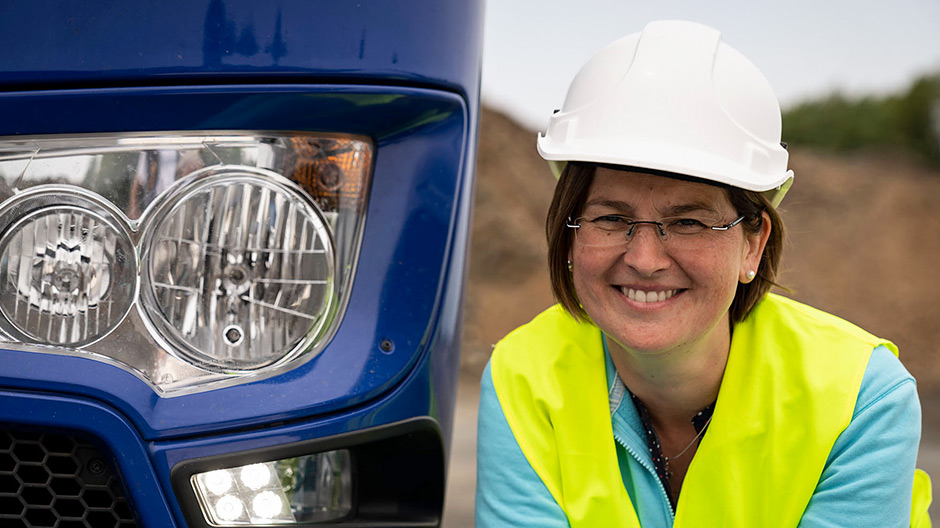
Doreen Trabert, junior manager of the Luzia Knackert haulage and excavator company from Thuringia, relies on a new Arocs 1848 for combined use on both the road and construction sites.
Whenever the need arises, Doreen Trabert gets behind the wheel of the truck herself. The 42-year-old junior manager of her mother’s haulage and excavator company, Luzia Knackert from Vacha in Thuringia, obtained her driving licence for trucks while studying for a degree in business administration. “During the semester break, I travelled all over Germany in a semi-trailer with my uncle, who also worked for us. When the driving time was no longer enough for him, I was the second man,” says Trabert with a grin.
This article contains additional material (videos, images and reports etc.) for registered RoadStars members. In order to experience the article to the full, you need to log in with your RoadStars account or register for one free of charge.
Become a RoadStar and gain access to exclusive content and campaigns!
Login for RoadStars members
Not yet a member? Join RoadStars now
Obtain exclusive access to exciting events and activities which only RoadStars can offer.
Join RoadStarsWhat started off as a student job has developed into a varied management position. Today, Trabert dispatches 15 company-owned construction trucks, does the accounting and controlling and looks after the customers. These can be roughly divided into two groups: on the one hand, the Knackert vehicles “wander” with the foremen from construction site to construction site, transporting sand, gravel, earth or asphalt in all variations on a contract basis. On the other, the trucks deliver the products from the large suppliers in the region directly to the customers. “Here, you don’t know what you’re going to get every day,” says Doreen Trabert.
She likes the challenges and variety her job has to offer. Her passion for truck driving has stayed with her to this day. If there is a shortage of staff and a tour or a transfer on the agenda, she steps in. She then prefers to get behind the wheel of her company’s new flagship: an Arocs 1848, which pulls a tipping trailer in its daily life.
Although the two-axle vehicle is primarily used on the road, it also has to master difficult or slippery terrain. “To meet both requirements in the best possible way, we ordered the vehicle with MirrorCam, all safety systems, new Predictive Predictive Powertrain Control and Hydraulic Auxiliary Drive,” explains Doreen Trabert.
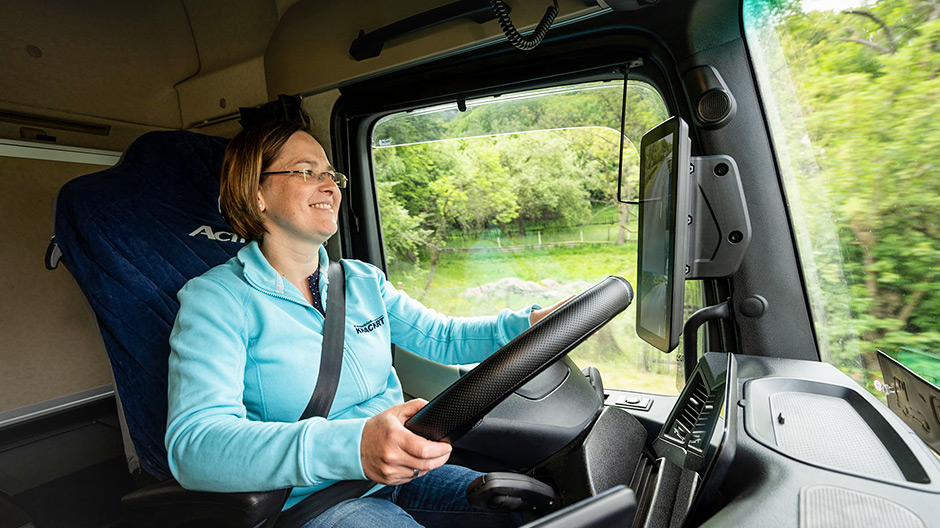
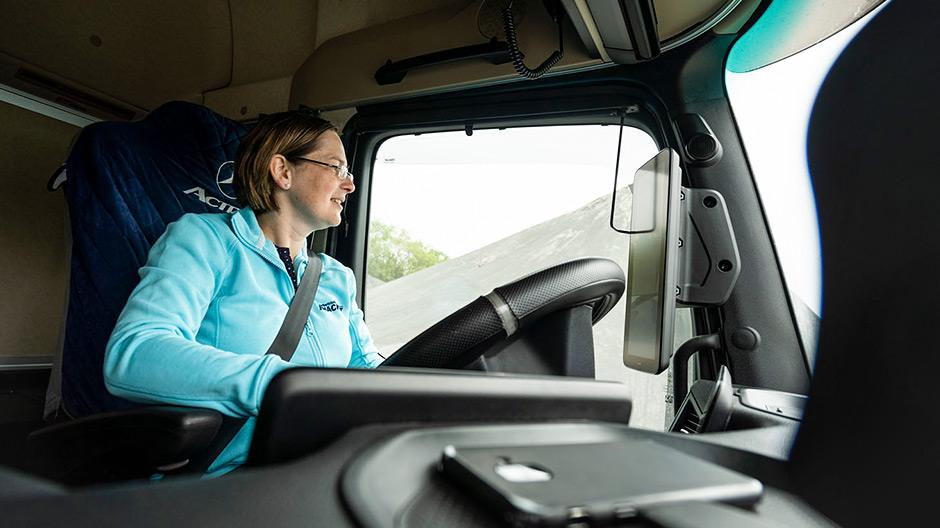
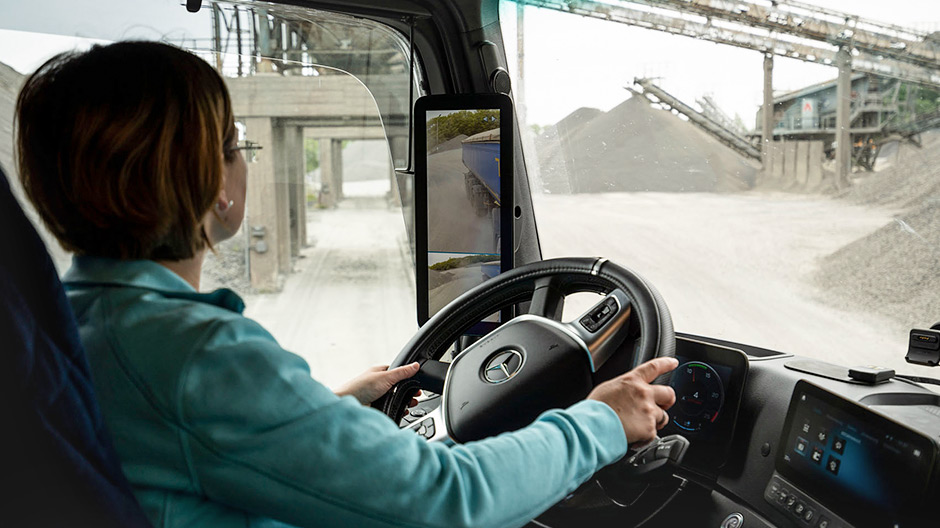
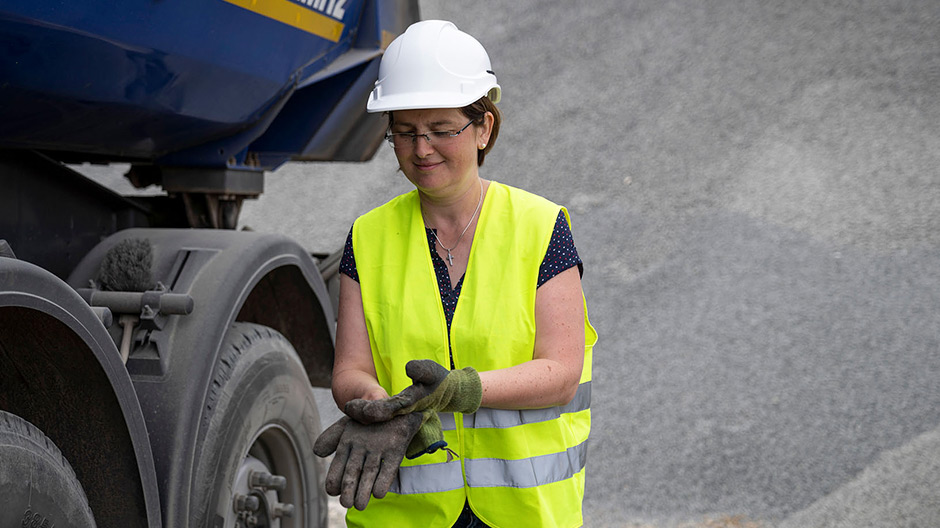
Considerably improved all-round visibility thanks to MirrorCam.
“What I particularly like about the MirrorCam is that there is an unobstructed view through the side windows because the cameras are attached at the very top of the roof frame. When manoeuvring and in tight bends, you have everything in view and are a safer road user!” Trabert also likes the fact that the cameras don’t get as dirty as the large mirrors used to. “That also increases safety.” It’s a matter of honour for the hands-on entrepreneur that her Arocs has the new Active Brake Assist 5 emergency brake assistant with improved person recognition on board, as well as the latest generation of the Sideguard Assist.
Up to five per cent lower fuel consumption on country roads.
In addition to safety, the efficiency of the new Arocs was also a decisive factor in favour of purchasing the vehicle for the Luzia Knackert haulage and excavator company. The improved Predictive Powertrain Control can now also be used on country roads in interurban traffic. As a result, the company is now up to five per cent more economical on routes like these. The reason is that the intelligent cruise control and transmission control system not only take into account inclines, crests and slopes, but now also curve radii, speed limits and right-of-way regulations automatically.
“I can now drive along country roads with cruise control without having to worry,” reports Peter Wedhorn, who spends his day sitting behind the wheel of the new Arocs. He finds it practical that Predictive Powertrain Control slows the truck down to 50 km/h just as it enters a town and then accelerates back to the set speed all alone when leaving: “I don’t have to worry about accidentally driving too quickly anymore.”
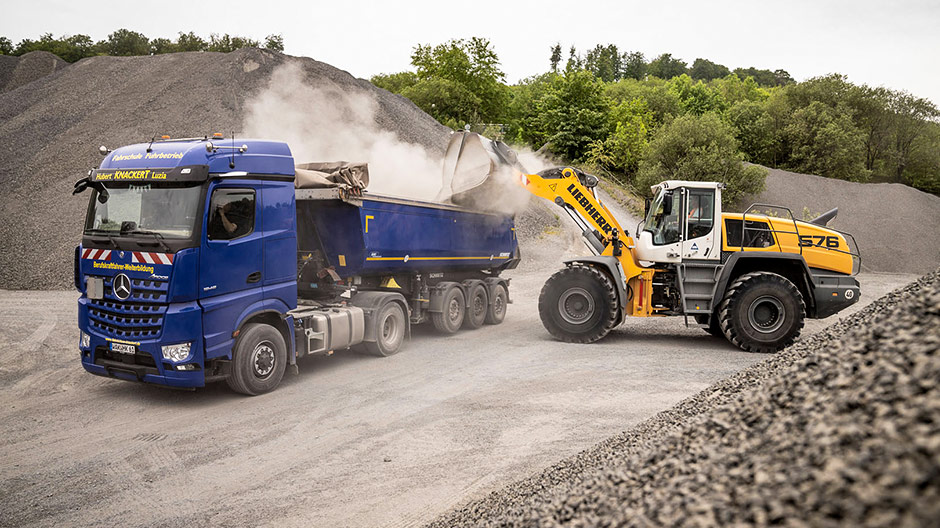
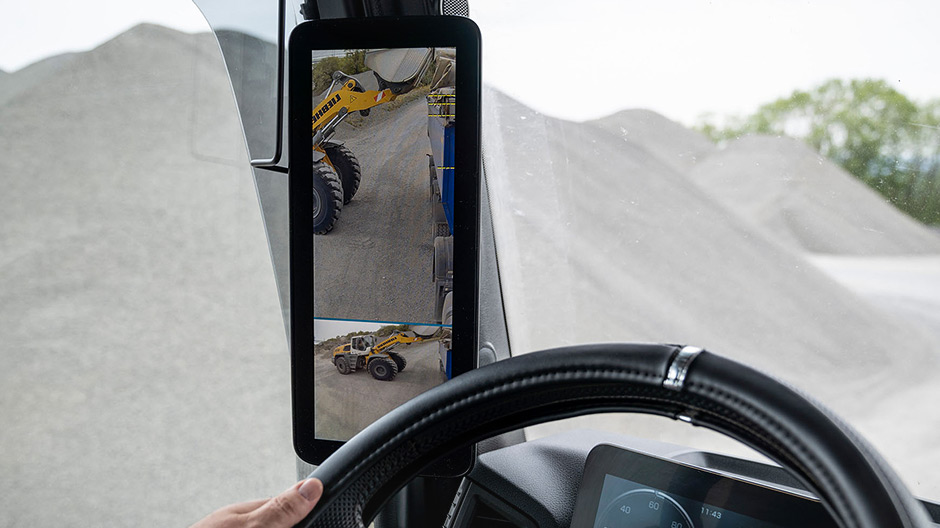
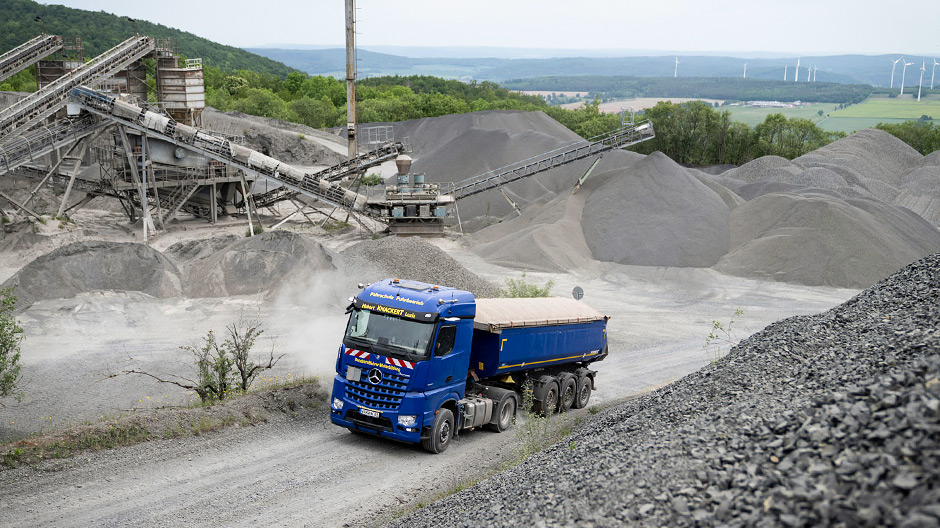
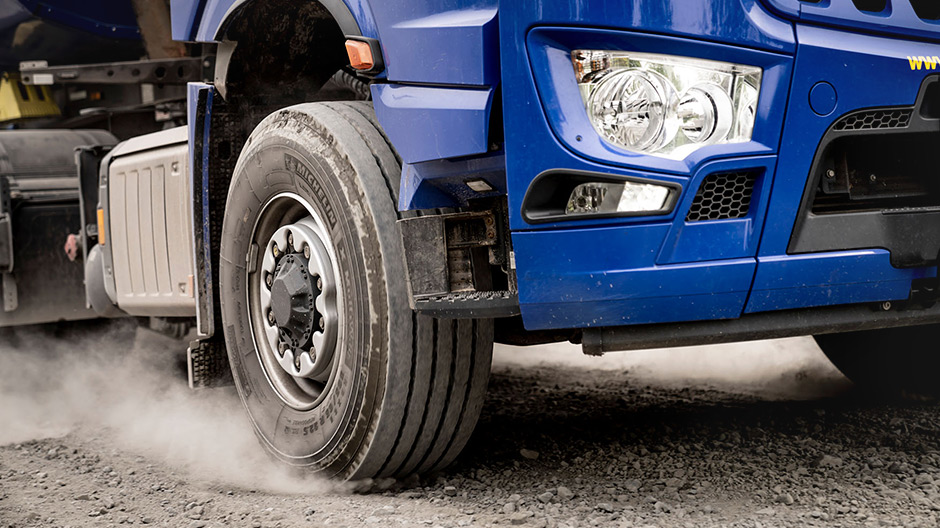
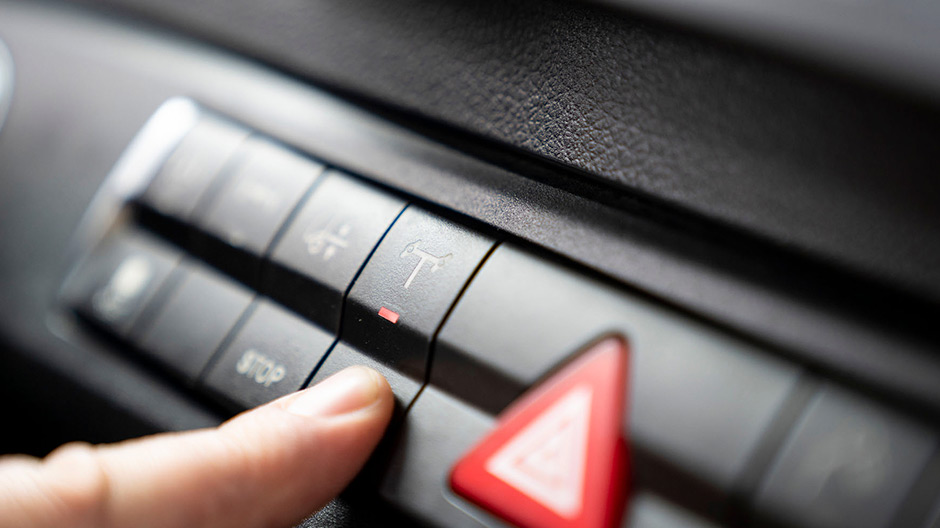
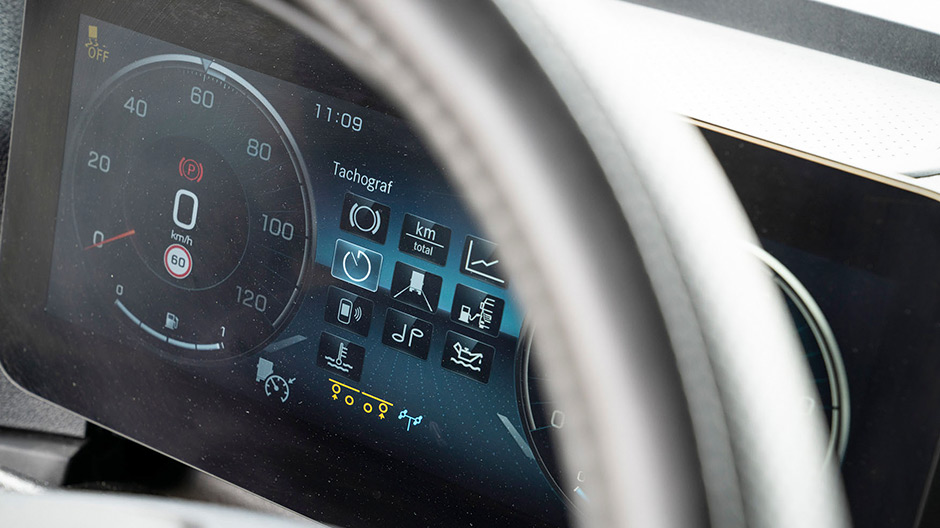
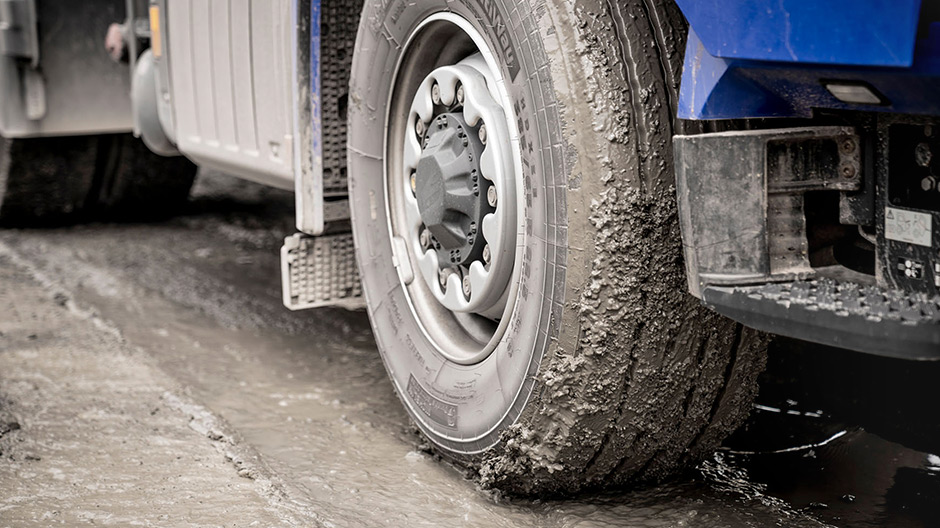
Powerful on difficult terrain and light on the road.
Hydraulic Auxiliary Drive also makes life tremendously easier in everyday working life: the approach aid for the front axle works up to a speed of 25 km/h. When entering difficult terrain, the driver activates the system via a switch in the centre console. Then the corresponding symbol appears in the primary display of the Multimedia Cockpit. When Hydraulic Auxiliary Drive is working, an engine-mounted pump directs pressure of up to 450 bar to two wheel hub motors on the front axle. Up to 40 kW of additional drive energy is now available per front wheel. “The system is extremely powerful on inclines or when it gets slippery,” Peter Wedhorn shares.
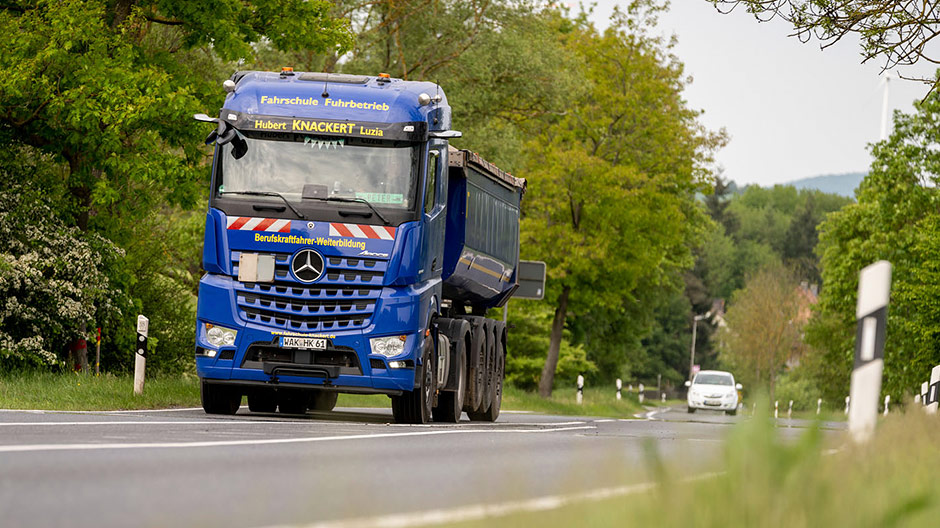
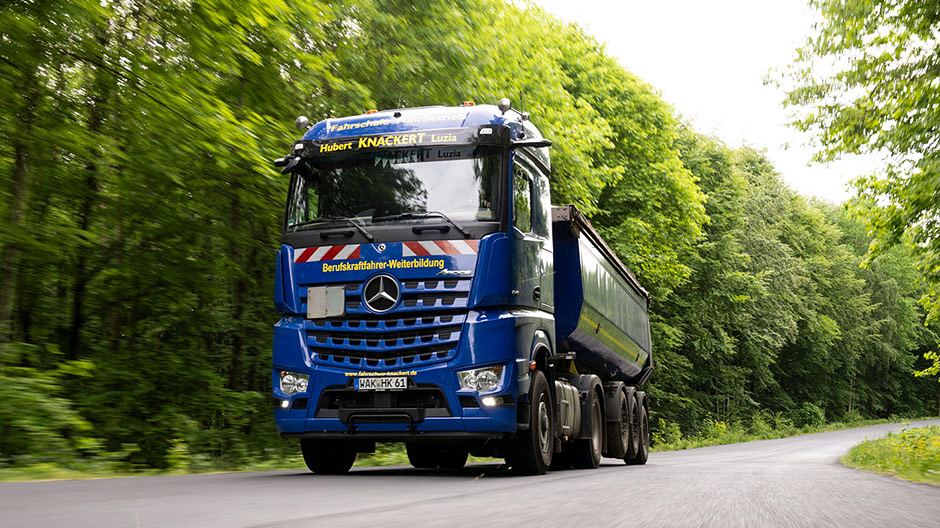
Temporary maximum traction, half a tonne of extra payload.
“Hydraulic Auxiliary Drive is suitable for us because we usually only need maximum traction for a short period of time,” explains Doreen Trabert. “The system weighs significantly less than a permanent all-wheel-drive solution and provides around 500 kilograms of extra payload per load. Compared to the lighter engageable all-wheel drive, we would still have a payload advantage of 350 kilograms. And on empty runs, less fuel is permanently consumed than with an all-wheel drive thanks to the lower tare weight.”
There are other advantages of the Hydraulic Auxiliary Drive: the location of the high-pressure pump on the auxiliary drive of the combustion engine ensures that full tractive force is available even when changing gears – this solution is currently only available from Mercedes‑Benz. Special hydraulic rotary distributors in the steering knuckle prevent the hydraulic hoses from twisting when steering and ensure a long service life. In addition, the oil filter only needs to be changed after around 600,000 kilometres. Doreen Trabert sums up: “Our Arocs can drive where other trucks get stuck thanks to Hydraulic Auxiliary Drive and doesn’t have to be pulled out with a crawler or wheel loader.”
The excellently equipped Arocs is also appreciated at the family-owned Fahrschule Knackert driving school, which Trabert’s father once founded. When the mandatory further training courses under the Berufskraftfahrer-Qualifikations-Gesetz (Professional Driver Qualification Act – BKrFQG) are due, the new Arocs is popular here as a demonstration vehicle. Doreen Trabert: “Participants are amazed at what is possible today when they get into our new Arocs with Multimedia Cockpit and every other conceivable system!”
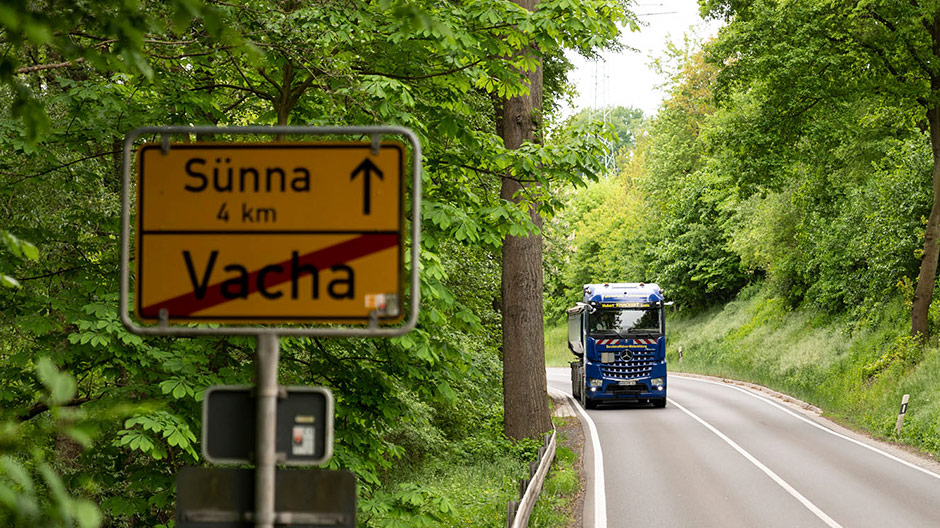
Never accidentally too fast: Predictive Powertrain Control automatically reduces the Arocs’ speed to 50 km/h before entering a town.
Photos: Matthias Aletsee
Video: Martin Schneider-Lau




Comment
Please log in to post a comment.
10 comments
Wünsche der Truppe allzeit gute und sichere Fahrt👍
Wünsche der Truppe allzeit gute und sichere Fahrt👍
Und mit den coolen Fotos, echt gelungene Reportage!!!😎👍
Und mit den coolen Fotos, echt gelungene Reportage!!!😎👍
Weiterhin ein gutes Händchen und gute Fahrt für Doreen und Ihre Fahrer.
Grüße Jörg 👍👍👍👍⛟😎😷
Weiterhin ein gutes Händchen und gute Fahrt für Doreen und Ihre Fahrer.
Grüße Jörg 👍👍👍👍⛟😎😷